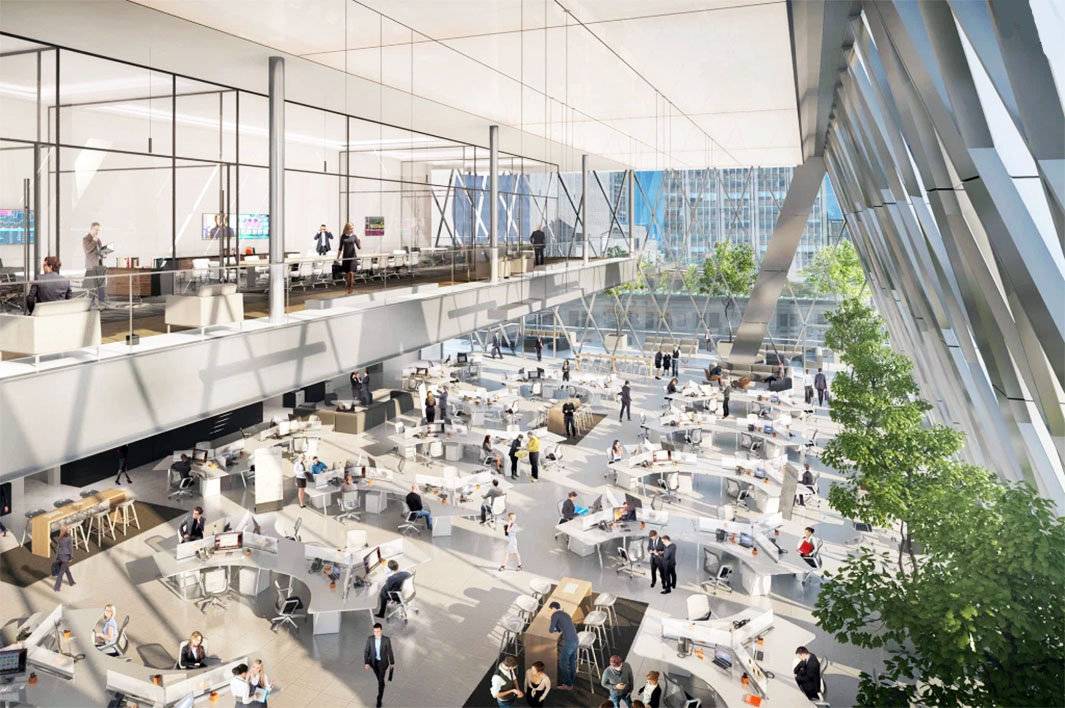Healthy Buildings: How Indoor Spaces Drive Performance and Productivity
By Joseph G. Allen and John D. Macomber | Harvard University Press | US$35 | 304 pages
Before the world was gripped by a major pandemic, the health of buildings was a somewhat specialist concern. Joseph Allen and John Macomber certainly didn’t think enough people cared enough about buildings’ impact on our lives and our economy. They wrote this book to change that.
Like many academics who spend their lives pursuing new knowledge but find industry take-up of their insights shockingly limited, Allen and Macomber were frustrated at how little the property sector knew, or even cared, about the relationship between buildings and health. Despite gains in “human-centred design,” “workplace experience” and “workplace health and safety,” the quality of something as mundane as the actual air in a workplace didn’t seem a priority.
Evidence was increasingly showing that indoor air quality has a dramatic impact on employee productivity and health. And other evidence revealed that specific building materials and processes can reduce air quality. Yet the property sector’s complicated system of financing, construction and management was failing to ensure buildings were designed with healthy outcomes in mind.
Healthy Buildings was therefore written to convince more people to care more about the indoor health of the buildings in which they spend so much of their lives. Allen and Macomber wanted the property industry, in particular, to pay more attention, because its members were the ones with the most power to change things. “The people who manage your building,” they urge, “have a greater impact on your health than your doctor.”
But then 2020 happened: a global pandemic that has not only underscored the dependence of our global economy on conditions of public health but also provoked a sudden emptying out of central business districts. From where we stand today, it can seem as if the world of work will never be the same again. What does that mean for the way we think about buildings — particularly those towers dominating commercial districts — and workplace health?
If the global spread of novel coronavirus has driven home the critical link between health and economy, it’s also turbocharged a shift towards teleworking and distributed workforces. We now know for certain that virtual connectivity can supplant physical clustering, particularly in professional, knowledge-based service industries. And if the workplace habits of 2020 stick around, this shift has drastic implications for the commercial building sector and the future of “workplace design.”
A growing number of companies are preparing for employees to work remotely on a permanent basis. One largely US-focused list tracking working-from-home announcements shows that the companies adopting permanent practices are mainly technology companies, like Twitter, Facebook, Shopify and payments company Square. For many others, flexible working is likely to become a permanent feature, with rotating schedules in place for employees to work part-time in their offices. As one analyst reflected in Fast Company, “The genie is out of the bottle, and it’s not likely to go back in.”
Writing before the pandemic, Allen and Macomber knew the world of work was changing as daily interactions became more and more digital. But, like most people, they believed the benefits of clustering in cities outweighed any attractions of purely virtual networking. In Healthy Buildings they call the digital revolution one of the “mega-changes” transforming the world of work, creating a “seismic shift” in how, when and where employees work. Before 2020, though, all this seemed a bit inconsequential. “Businesses are responding,” they write, “with workplaces centred on the human experience, with employee health and well-being as a core component.”
For savvy investors and developers, the digital revolution was a chance to refocus the attention of property developers on what a healthy building could add to a bottom line. Allen and Macomber point to quantitative research showing “in an objective and reproducible way that our cognitive abilities, health, productivity, and well-being are directly impacted by decisions in the engineering, operations, and running of our buildings.”
If better indoor air can improve productivity by 10 per cent, as one study found, then that can be promoted as a value-add asset by a landlord or property manager, translating into higher profits not just for a company leasing space in the building but also for the landlord, who can justify premiums on the rent. It’s this logic that gets us to the central premise and promise of this book: “Healthy Buildings represent, without exaggeration, one of the greatest health — and business — opportunities ever.”
Here we are, though, in 2020, when the impact of a global pandemic on workplace practices makes a book like Healthy Buildings at once very timely and also somewhat stranded in a strangely alien world.
Looking backwards from our vantage point today, we see a world with an unshakeable belief that perpetual demand for high-rise office towers would remain a key feature of modern urban life. Commercial real estate financiers and developers would continue to dictate the physical conditions in which institutionalised work is carried out, “responsive” to “human-centred” design trends such as “activity-based working” (open-plan offices where you continuously “hot desk” for the forty-odd hours of your working week).
This unshakeable system of high-rise clustering gave us the centrifugal patterning of the modern city, with its radial transport networks fanning out from city centres to sleepy, low-rise suburbs. With it came the city’s congested streets, demanding ever-increasing public spending on transport infrastructure to facilitate mass population flows each day, ultimately inundating and extending “peak hour.”
That system of design didn’t exactly have the health of employees in mind. It demanded long commutes for employees forced to remain sedentary for extended hours, even on top of the many desk-bound hours they spend in air-conditioned offices. And for those with young families, it required complicated systems of childcare and after-school care. If we stopped to think about it, the health implications of centrally clustered commercial office spaces ought to have been considered well beyond the quality of their indoor air.
Because Healthy Buildings now exists in a world of novel coronavirus, its readers may well find themselves wondering at the narrow definitions of “workplace health” it prioritises. Readers might even wonder: who really stands to benefit from its approach to health and workplace design, and who loses?
Quoting Ralph Waldo Emerson’s observation that “the first wealth is health,” Allen and Macomber target executive leaders and have the bottom line of the property sector firmly in their sights. Just as building owners have been able to capitalise on the energy efficiency movement, investors in healthy buildings can now use building certification standards to differentiate their product from more standard stock.
The most promising of these is a new WELL building standard, which focuses exclusively on the impacts of buildings on human health and wellness. It builds on the success of the Leadership in Energy and Environmental Design, or LEED, certification standard developed by the US Green Building Council and, locally, the Green Building Council of Australia. Under LEED, buildings can apply for “points” against energy efficiency measures, which in turn create market differentiation and, ipso facto, higher rent yields and lower vacancy rates.
Like LEED, WELL allows financiers to recoup investments, whether in energy efficiency or healthy building outcomes, in the form of higher rents. Think of it as building branding, with benefits.
WELL may be a useful innovation for the property sector. But what if, after 2020, many businesses start to question their reliance on the office tower? Prioritising the health of employees in 2020 has actually meant keeping workforces at home. Return-to-work programs over coming months need to be staggered to avoid congestion on public transport networks. Has commercial real estate’s grip over our workplaces — with its insistence that office towers are the best design option we’ve got — just been loosened forever?
Of course, perhaps 2020 will just be a blip, a year to remember. For the financiers of New York’s 425 Park Avenue, which opened in June 2020 as the first tower in New York City to be certified with the WELL standard, there’s not too much to worry about. The building prioritises health-focused amenities like rooftop gardens, open-air patios and bike facilities. While acknowledging it’s a challenging time, its financiers aren’t making any radical changes in the eye of this storm. “You’re not redesigning a building for a moment in time if it’s going to last for fifty or a hundred years.”
Healthy Buildings co-author Joseph Allen was present at a virtual “fireside chat” about the new building with its designer, Norman Foster, one of its financiers, David Levinson, and the president of the International WELL Building Institute, Rachel Gutter. For Gutter, the pandemic means the conversation has fundamentally shifted: “WELL and healthy buildings went from sounding like a ‘nice to have,’ sounding like a luxury, to sounding like a matter of life and death.”
Yes, healthy buildings certainly are more important than ever. But for those less committed, reputationally and financially, to an existing pipeline of developments, now might be a good time to reflect more seriously on how the pandemic year of 2020 will change where and how employees work.
It might also be a good time to consider the other kinds of health impacts that result from a relentless pursuit of company profit at the expense of other kinds of planetary health. In fact, now would be a very good time to make planetary health a priority that dictates which major building developments can be approved. Wouldn’t that be a way to think seriously about the health impacts of buildings, too? •




